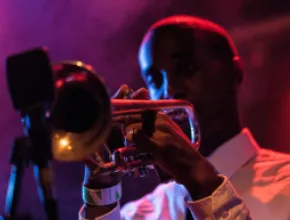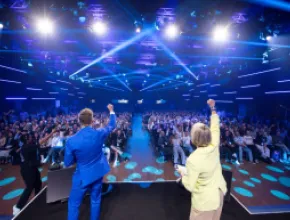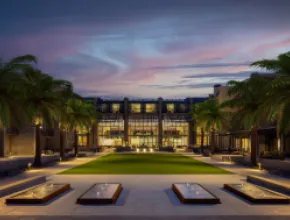The Windy City is on fire.
No, it’s not a replay of the 1873 conflagration that destroyed what is today downtown Chicago. The fire is demand by meeting planners, sponsors and attendees that is driving hotel occupancy and rates higher, driving hotel construction and driving 12 percent growth in convention attendance in 2012.
“I’m at 82 percent occupancy and I have 2,300 rooms to fill every night,” says Patrick Donnelly, general manager of the Hyatt Regency Chicago, the largest hotel in town. “My target for January was 39 percent and I hit 62 percent. Event sponsors have unbelievable attendance here. Planners don’t have the distractions of casinos and theme parks to worry about. Attendees actually attend their sessions when they come to Chicago.”
How hot is Chicago? The National Restaurant Association decided to stay in Chicago despite blandishments from every other city that could handle its 60,000 attendees. So did the International Manufacturing Technology Show, which lured 100,000 attendees last year. AIBTM, the Americas Incentive, Business Travel & Meetings Exhibition, left Philadelphia for a six-year rotation between Chicago and Orlando.
“There are a lot of great reasons for Chicago,” says Mike Lyons, AIBTM’s exhibition director. “It has the best direct air access of any city. It has great restaurants and venues and some of the best hotels in the country. You’ve got great culture, great theater, great restaurants, great shopping and great sports. For a group like us, Chicago is a phenomenal destination.”
Choose Chicago, the city’s CVB, isn’t complaining. The city, from Mayor Rahm Emanuel down the line, is consciously driving meetings, and with good reason. Group events account for about half the city’s travel and tourism revenues, business travel 35 percent and leisure travel just 15 percent.
Andrew Schorr, general manager of Hosts Chicago, says the mayor is putting Chicago on the international meetings map, not just domestic rotations. The industry has stopped grousing about the economy and started doing business. Good business, growing business.
“Mayor Emanuel is making meetings and conventions a 100 percent priority,” says D. Bradley Kent, senior vice president of sales and services for Choose Chicago. “He meets with group leaders face-to-face to talk up the advantages of meeting in Chicago. To have your city leadership step forward and say ‘I care’ affects site decisions in a big way.”PageBreak
City Hall Twists Arms
New union work rules also affect site decisions in a big way. Choose Chicago attributes $4 billion in renewed, new and extended convention bookings at McCormick place to union work changes.
“Those changes made all the difference,” says Mary Pat Heftman, executive vice president conventions for the National Restaurant Association. “Attitudes have changed dramatically. Exhibitors can bring more equipment and do more work themselves. It is the increased efficiency and time savings as much as the cost difference.”
New rules allow exhibitors and show managers to do their own work in their own booths at McCormick Place, Navy Pier and other city-owned facilities. IATSE stage hands can now perform audiovisual, lighting and sound equipment work that was previously done only by IBEW electricians. Straight-time hours have been expanded, overtime made more flexible and double time rolled back.
Work at city-controlled venues is now done by two-person crews instead of three. Exhibitors can now unload and load small vehicles at loading docks and other designated areas.
DMCs see the difference.
“Chicago was on the verge of losing major shows, including NRA, because labor was getting cost-prohibitive,” says Pattie Monahan, senior account executive with Chicago Is, a local DMC. “The city stepped in to help change that.”
The Hotel Boom
Chicago has more than 108,000 hotel rooms, 38,000 of them downtown. But don’t expect many bargains, cautions Mark Elbe, vice president of PKF Consulting. RevPAR was up 10.2 percent last year, a combination of 4 percent occupancy growth and 5.9 percent growth in average daily rates. RevPAR is projected to jump another 7.7 percent this year.
“We expect most downtown Chicago hotels to achieve 2007 RevPAR in 2013,” Elbe says. “Expect availability challenges in the short term. Chicago is going to be full in 2013.”
Nearly 3,000 additional downtown rooms are coming on-line over the next two to three years. One of the larger projects is a new 460-room tower at the Hyatt Regency McCormick Place. The addition, due later this year, will take the total room count to 1,259.
“When you have citywides, exhibitors in particular want to be close to their hall,” says Paul Daly, the hotel’s general manager. “We only have 45,000 square feet of group space in-house, but there is 2 million square feet attached to us.”
The new inventory could affect rates and occupancy, says Pierre-Louis Giacotto, general manager of the Radisson Blu Aqua Chicago, but the increase is good news for planners and great news for Chicago. He expects demand to continue growing based on continuing infrastructure investment.
So does Elbe, who says Chicago is reinventing itself as one of the world’s top 10 meeting destinations.
“To transform the downtown of a rustbelt city is a real testament to the market and to the city itself,” Elbe says. “It’s not luck, it’s political and CVB and business community attention to the real issues. Chicago is able to make things happen.”
Fred Gebhart is a San Francisco-based freelancer who lived in Chicago as a child. His favorite Chicago breakfast is a savory empanada and a cup of Aztec chocolate with chile and allspice from Xoco, chef Rick Bayless’ Mexican street food palace on North Clark Street.






